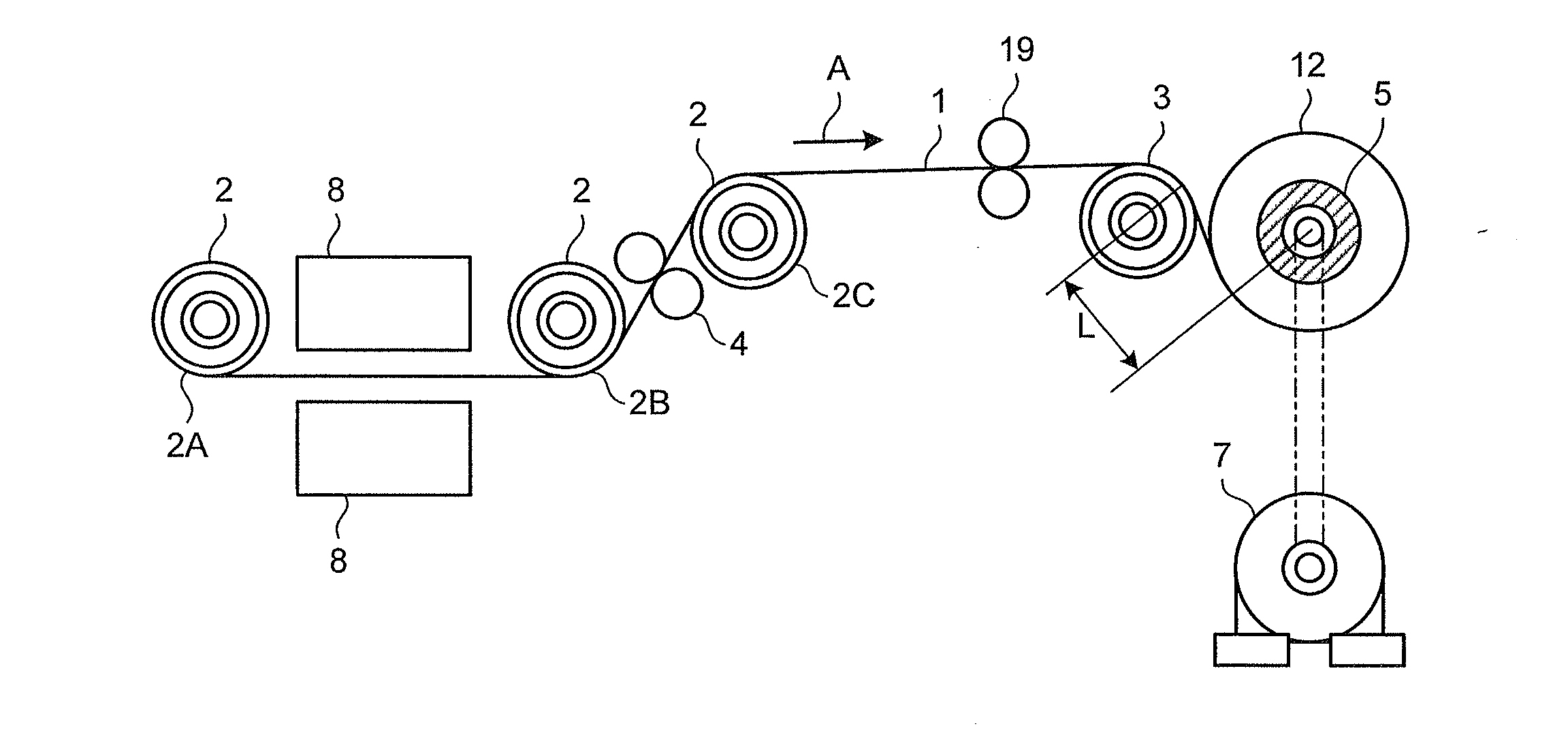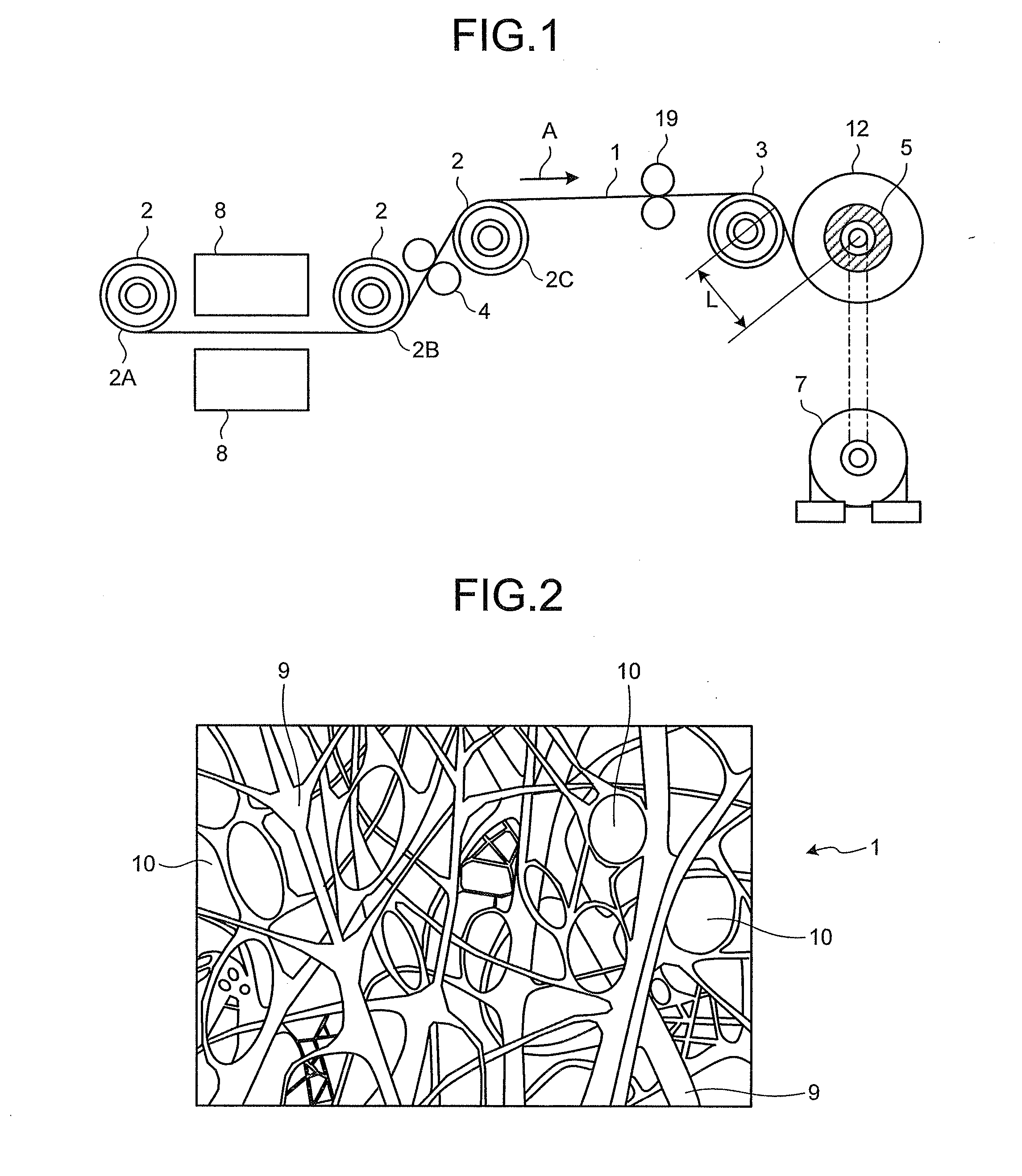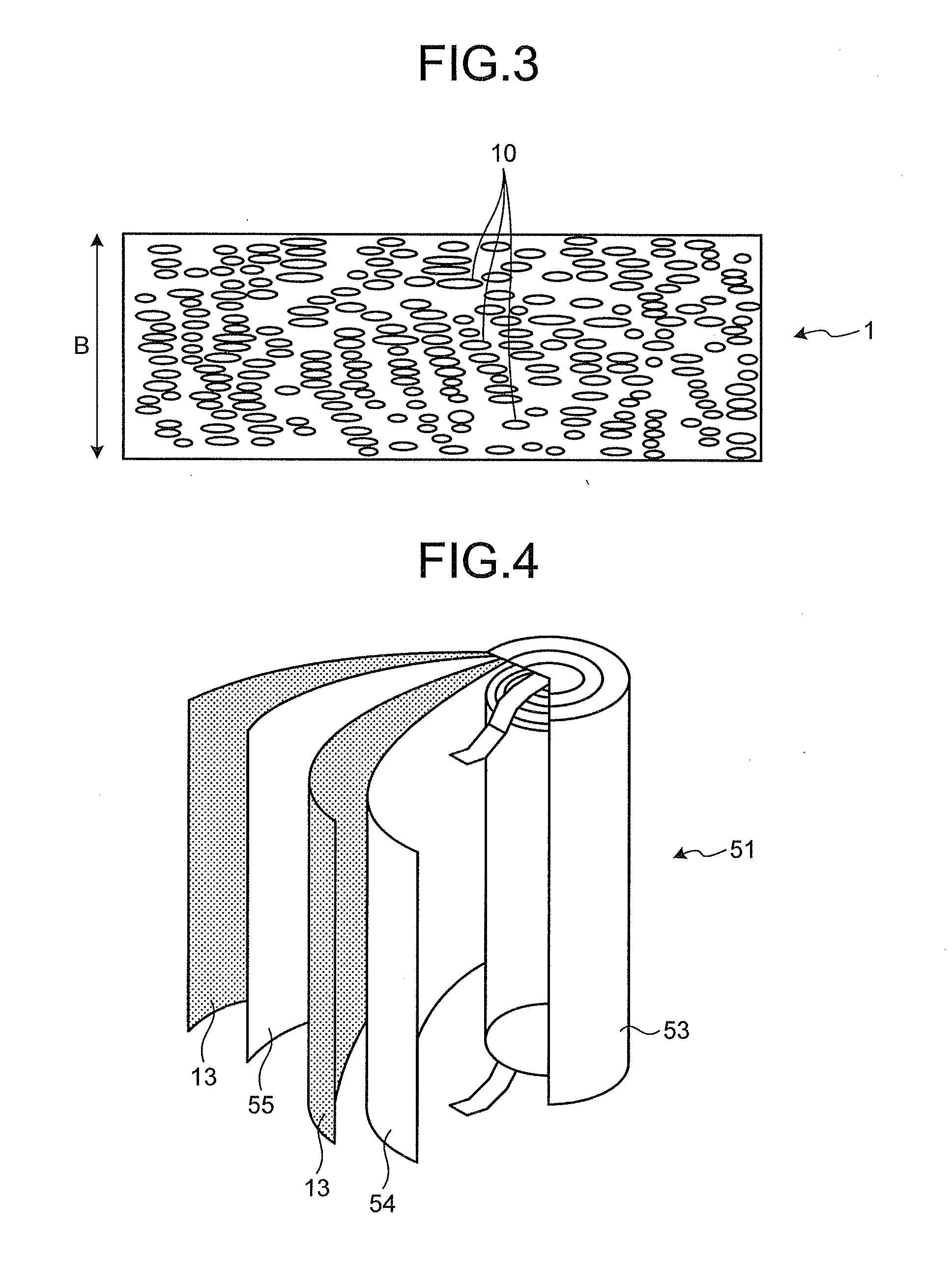Apparatus and method for manufacturing microporous plastic film roll
a microporous plastic and apparatus technology, applied in the field of apparatus and a manufacturing method of microporous plastic film rolls, can solve the problems of limiting the dustproof effect, no direct improvement in productivity, and high risk, and achieve the effect of reducing the occurrence of pinhole faults
- Summary
- Abstract
- Description
- Claims
- Application Information
AI Technical Summary
Benefits of technology
Problems solved by technology
Method used
Image
Examples
example 1
[0091]The polypropylene microporous plastic film 1 formed with through holes 10 as illustrated in FIG. 2 and FIG. 3 by a biaxial stretching process after controlling a crystal structure of polypropylene was conveyed by a conveyance system having the pinhole fault detector 8 as illustrated in FIG. 1 and was wound continuously on the winding core 5 to manufacture the microporous plastic film roll 12. The air permeability of the microporous plastic film 1 was measured while passing 100 ml of air using a B type Gurley tester stipulated in Japanese Industrial Standards JIS P8117 at a temperature of 23° C. and a humidity of 65%, and the result was 300 seconds. The cutting unit 4 of the shear-cutting type was arranged at some midpoint in the conveyance system to cut the microporous plastic film 1 into a width of 50 mm. The thickness of the microporous plastic film 1 was 30 μm.
[0092]Although not illustrated in FIG. 1, the conveying rollers 2 and the near roller 3 are all coupled to a belt a...
example 2
[0096]The material of the part of all the conveying rollers 2 including the conveying roller 2C and the near roller 3 to be in contact with the microporous plastic film 1 was metal made of hard chromium plating (hereinafter HCr). The Vickers hardness of the contact part of the near roller 3 was measured with a test load of 2 N based on Japanese Industrial Standards JIS Z2244, and the result was a value of 1,000. As for the surface roughness of the contact part (metallic surface) of the near roller 3, the arithmetic average roughness Ra was determined based on Japanese Industrial Standards JIS B0601 (2001) by a contact type surface roughness measurement machine manufactured by Mitutoyo Corporation with a probe material of diamond, a probe tip radius of 2 μm, and a measurement force of 0.75 mN, and the result was 0.9 The Vickers hardness of the HCr part was measured by a measurement method described in JIS 22244 (2009), and the result was 800. The wrinkle removing unit 19 illustrated ...
example 3
[0097]The same microporous plastic film 1 as Example 1 was wound by the conveyance system in FIG. 1 at the same speed and tension conditions. The conveying roller 2C had many grooves on its surface and was a suction roller with its inside sucked by a blower. The suction pressure was −5 kPa. The material of the other conveying rollers 2 and the near roller 3 was HCr, and its arithmetic average roughness Ra was 0.9 μm like Example 2. The combination of these conditions is listed in FIG. 11.
PUM
| Property | Measurement | Unit |
|---|---|---|
| Length | aaaaa | aaaaa |
| Length | aaaaa | aaaaa |
| Molar density | aaaaa | aaaaa |
Abstract
Description
Claims
Application Information
 Login to View More
Login to View More - R&D
- Intellectual Property
- Life Sciences
- Materials
- Tech Scout
- Unparalleled Data Quality
- Higher Quality Content
- 60% Fewer Hallucinations
Browse by: Latest US Patents, China's latest patents, Technical Efficacy Thesaurus, Application Domain, Technology Topic, Popular Technical Reports.
© 2025 PatSnap. All rights reserved.Legal|Privacy policy|Modern Slavery Act Transparency Statement|Sitemap|About US| Contact US: help@patsnap.com



